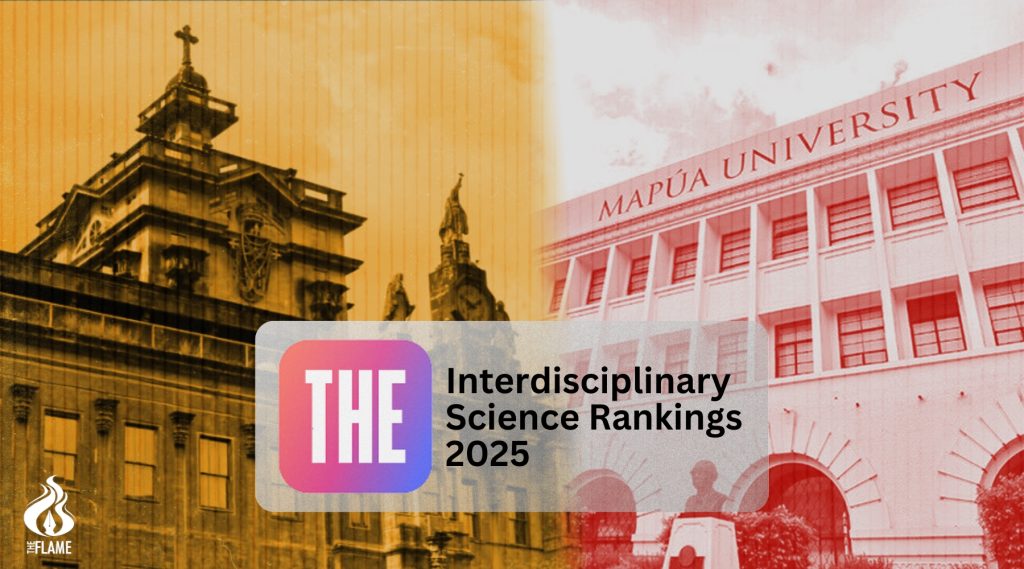
THE UNIVERSITY of Santo Tomas outperformed all participating Philippine schools in the first edition of the Times Higher Education (THE) Interdisciplinary Science Rankings (ISR), which measures institutions’ contribution to various scientific disciplines.
Only two Philippine universities obtained a rank in the newly-launched assessment. Nine schools in the country settled for a “Reporter” status, which is given to institutions that submitted data but did not secure a ranking because of their failure to meet the eligibility criteria.
“With such huge worldwide interest in this pioneering new ranking, reflecting a worldwide hunger to support and promote interdisciplinary research from universities across the planet, it is exciting to see the Philippines represented at such a high level,” THE chief global affairs officer Phil Baty told The Flame through a representative.
“More than 1,000 universities across the world submitted [an] assessment for this ranking, so to have a flagship Filipino university make the overall world top 300 is a remarkable achievement,” he added.
UST also placed within the 251-300 bracket and attained an overall score of 39.8-42.5 globally. It was followed by Mapúa University, which landed within the 501-600 band with a score of 25.4-29.9.
The University of the Philippines, Ateneo de Manila University and De La Salle University, institutions that consistently secure rankings in other assessments, were not covered.
The universities were assessed based on three pillars that represent phases in research, namely “inputs” (19%; 11% for industry funding for science, 8% for interdisciplinary research) and “process” (16%; 4% each for measure of success, physical facilities, admin support and promotion process).
The last pillar is “outputs,” which makes up 65% of the total score (25% for reputation, 20% for quality of interdisciplinary science research, 10% each for number of interdisciplinary science research publications and proportion of interdisciplinary science research publications and 5% each for utility outside of discipline and quality of interdisciplinary science research).
UST performed best in “process” with a score of 66.7, followed by inputs (54.7) and outputs (29.7).
The Philippine schools that were given a “Reporter” status were Cebu Technological University, Lyceum-Northwestern University, Mindanao State University – Illigan Institute of Technology, Nueva Ecija University of Science and Technology, Quezon City University, Saint Louis University, University of Eastern Philippines, University of the Immaculate Conception and Visayas State University.
The ranked institutions must meet the following requirements: submit data for THE World University Rankings, declare at least one science subject as applicable, publish at least 100 interdisciplinary science academic studies from 2019 to 2023, have at least 50 academic and research staff across the declared science subject, must not have more than two missing metrics and must not be in THE’s exclusion list.
The newly-launched ranking, which was established by THE in partnership with postdoctoral program Schmidt Science Fellows, aims to provide schools with benchmarking data and recognize those that incentivize cross-disciplinary work.
THE ISR debuted with 749 academic institutions across 92 countries. F



